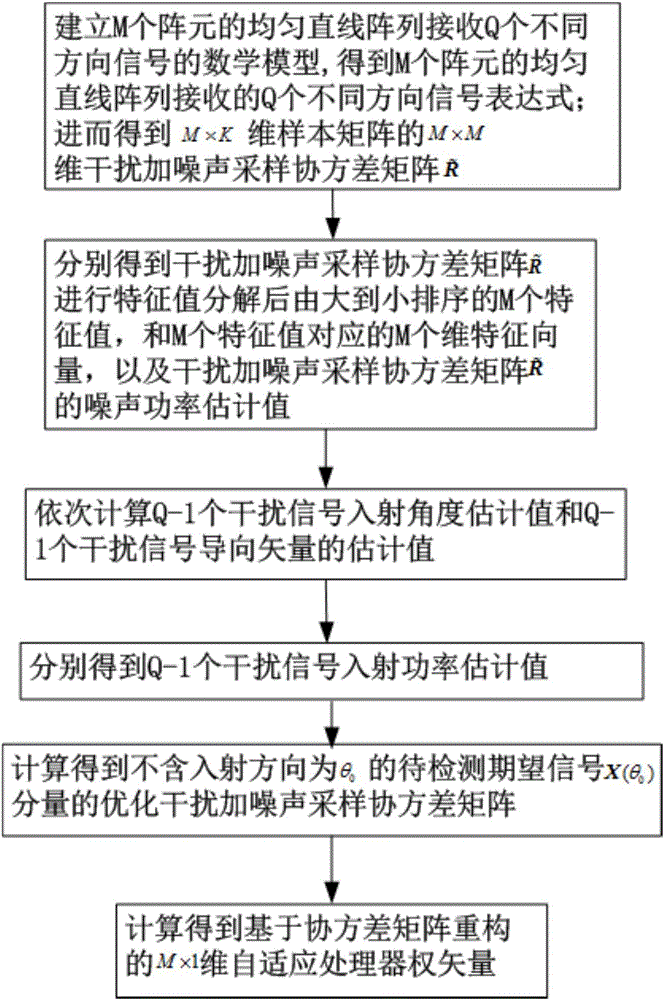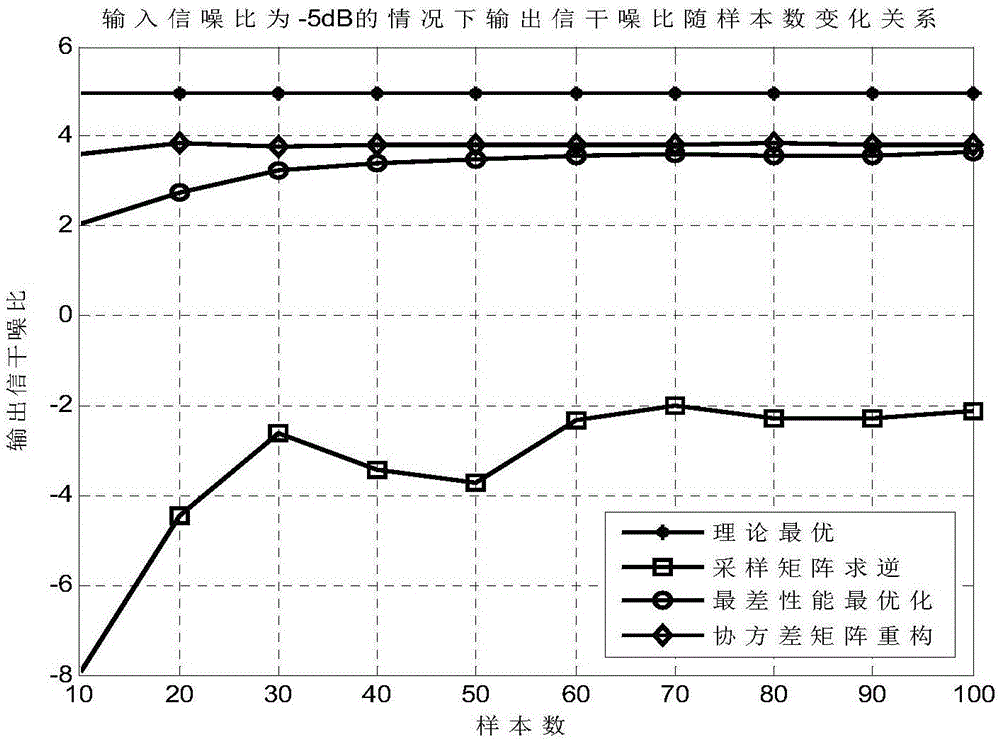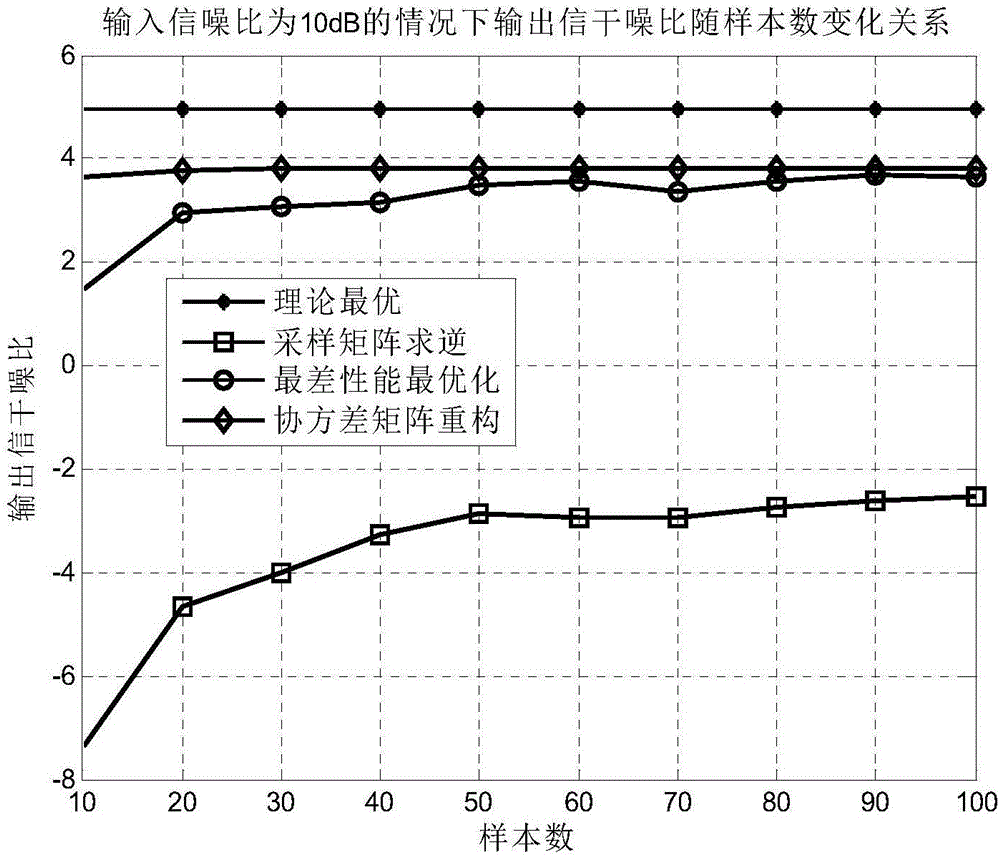Self-adapting beam forming method based on reconstitution of covariance matrix
An adaptive beam and covariance matrix technology, applied in the direction of space transmit diversity, radio transmission system, electrical components, etc., can solve the problems of performance affected by a priori parameters, poor performance, no suppression of interference signals, etc., to reduce Cancel phenomenon, improve performance, ensure the effect of distortion-free output
- Summary
- Abstract
- Description
- Claims
- Application Information
AI Technical Summary
Problems solved by technology
Method used
Image
Examples
Embodiment Construction
[0025] refer to figure 1 , is a flowchart of an adaptive beamforming method based on covariance matrix reconstruction of the present invention; the adaptive beamforming method based on covariance matrix reconstruction includes the following steps:
[0026] Step 1, establish a mathematical model in which a uniform linear array of M array elements receives Q signals in different directions. In the mathematical model, the Q signals in different directions are Q far-field narrowband signals, and any of the Q far-field The field narrowband signal is incident into a uniform linear array of M array elements, and the Q far-field narrowband signals include 1 desired signal to be detected and Q-1 interference signals, and the incident direction of the desired signal to be detected is θ 0 , the incident directions of the Q-1 interference signals are θ 1 ,θ 2 ,…,θ Q-1 ; and then obtain the expression of signals in Q different directions received by a uniform linear array of M array ele...
PUM
 Login to View More
Login to View More Abstract
Description
Claims
Application Information
 Login to View More
Login to View More - Generate Ideas
- Intellectual Property
- Life Sciences
- Materials
- Tech Scout
- Unparalleled Data Quality
- Higher Quality Content
- 60% Fewer Hallucinations
Browse by: Latest US Patents, China's latest patents, Technical Efficacy Thesaurus, Application Domain, Technology Topic, Popular Technical Reports.
© 2025 PatSnap. All rights reserved.Legal|Privacy policy|Modern Slavery Act Transparency Statement|Sitemap|About US| Contact US: help@patsnap.com



